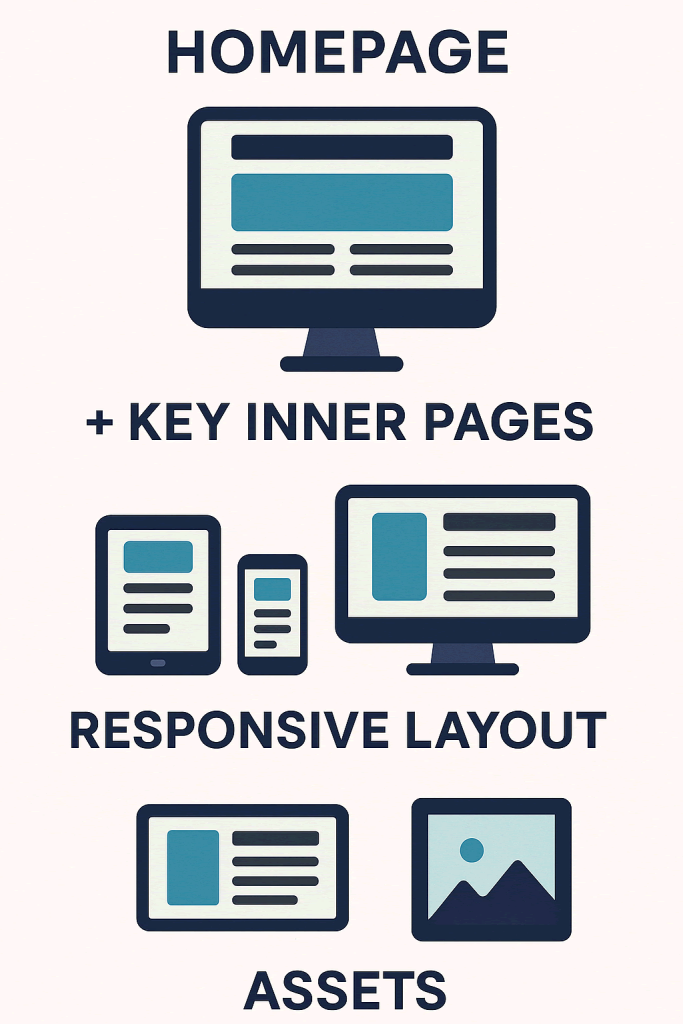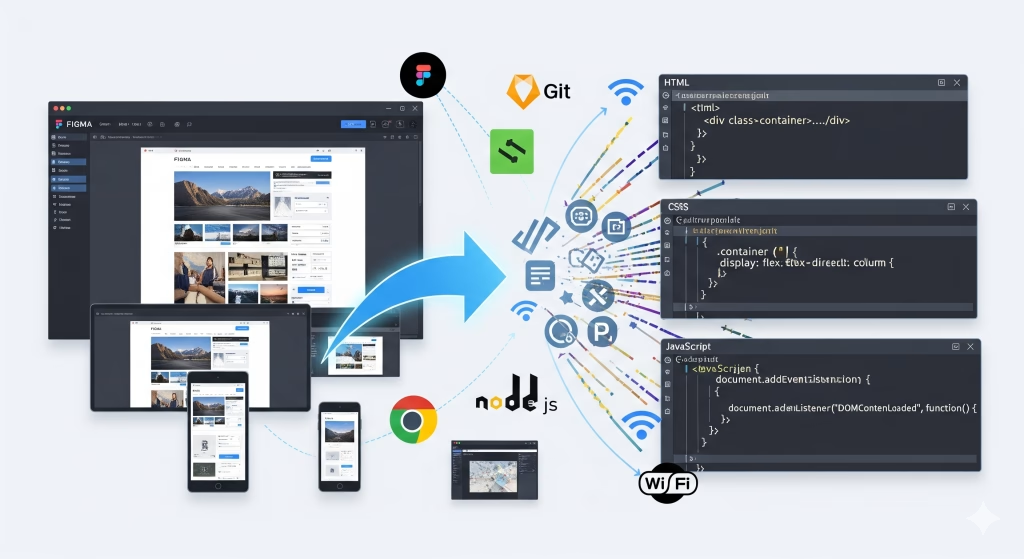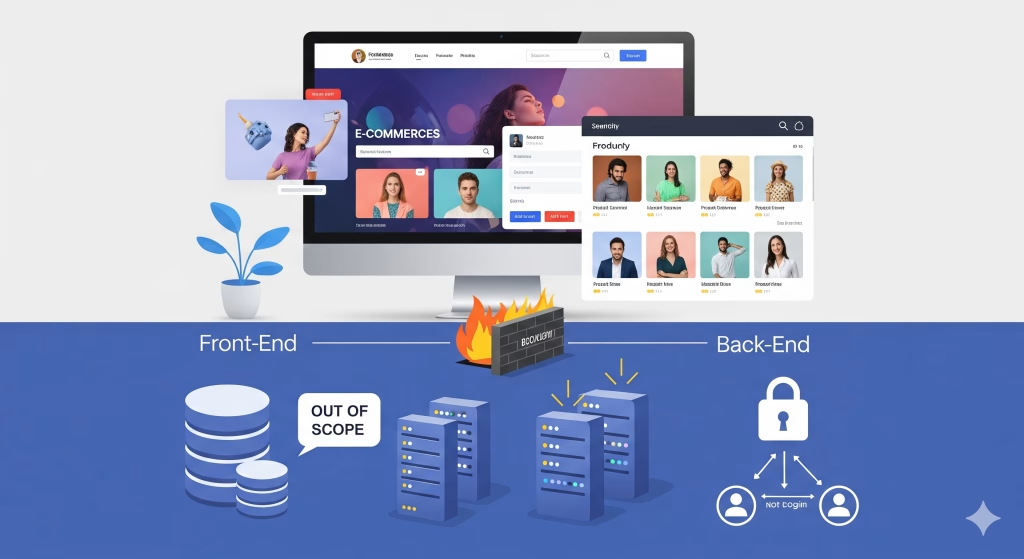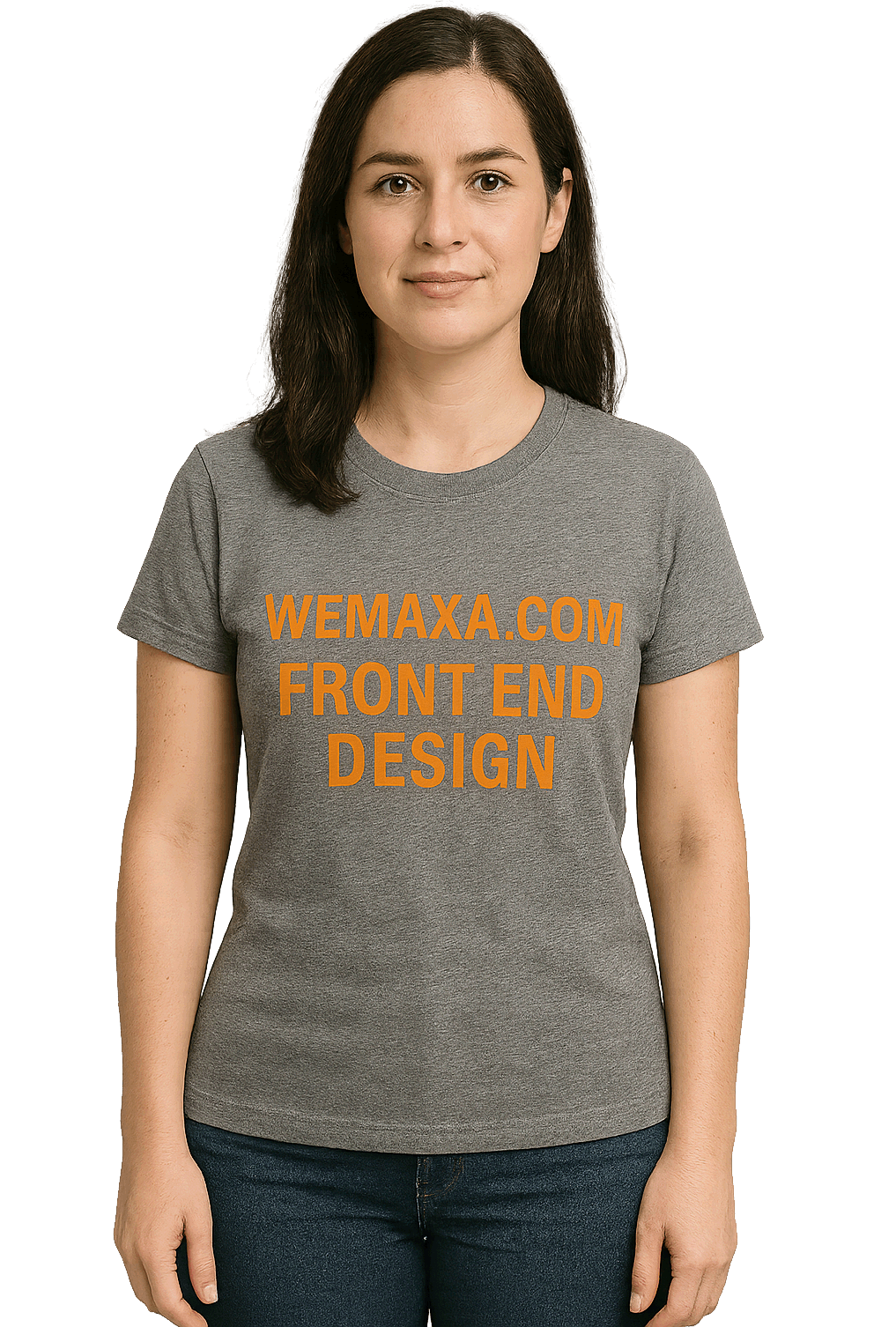A typical front-end development package includes all the essentials required to bring your visual designs to life as a working website or application interface. This process takes static design files usually created in tools like Figma, Sketch, or Adobe XD and translates them into responsive, interactive code using technologies such as HTML, CSS, JavaScript, and popular frameworks like React or Vue. The goal is to ensure the user experience is smooth, intuitive, and visually faithful to the original design across all devices and browsers.

Key deliverables in a front-end package often include responsive layouts, mobile optimization, navigation menus, sliders, form components, animations, and general styling. Accessibility features and SEO-friendly code structure are usually part of the package as well. If your site includes dynamic content or interactive elements, the front-end code may also incorporate API connections or basic client-side logic to manage things like user input or transitions. The final result is a clean, maintainable codebase ready to integrate with your back-end or CMS of choice.
However, there are often some limitations to keep in mind. A front-end package usually does not include server-side development, database setup, or back-end logic unless specifically agreed upon. It also may not cover advanced functionality like payment processing, login systems, or content management unless those features are planned and scoped as part of a larger build. Front-end developers focus on what users see and interact with, not on how the data behind the scenes is stored or managed.
For clients working with design and development teams separately, it’s important to ensure that handoffs are well coordinated. Clear documentation, organized file structures, and communication between teams make all the difference in avoiding delays and misalignments. At Wemaxa, we provide front-end packages that are developer-ready and built to scale, giving you a strong, polished foundation to connect with your audience and power your site or app with confidence.
✅ What’s Included in a Standard Front-End Package
1. Core Development
- HTML5: Semantic, SEO-friendly markup.
- CSS3/Sass: Responsive layouts (Flexbox/Grid), animations, and variables.
- JavaScript (ES6+): Interactive elements (forms, sliders, dynamic content).
2. Responsive Design
- Mobile-first or adaptive layouts (tested on phones, tablets, desktops).
- Cross-browser compatibility (Chrome, Firefox, Safari, Edge).
3. Performance Optimization
- Compressed images (WebP/AVIF formats).
- Minified CSS/JS files.
- Lazy loading for images/videos.
4. Basic SEO Setup
- Semantic HTML tags.
- Meta titles/descriptions.
- XML sitemap (if included).
5. Integration Ready
- API connections (for future back-end integration).
- CMS-compatible templates (e.g., WordPress, Shopify).
6. Deliverables
- All source files (HTML, CSS, JS).
- Assets (fonts, icons, images).
- Documentation (how to update content/reuse components).
⚠️ What’s Usually Not Included (Unless Specified)
- Back-End Development: Databases, server-side logic (PHP, Node.js, etc.).
- Custom CMS Setup: Full WordPress/Shopify development (unless stated).
- Advanced Animations: Complex GSAP/WebGL work (often an add-on).
- Content Creation: Copywriting, professional photography.
- Ongoing Maintenance: Post-launch updates/hosting.
MORE LINKS:
Front end includes?
Mobile version of a site
Seo optimized design
Technology for frontend?
Match existing branding
I need animations?!
How long it takes?
Preview the design
Provide source files
WHAT’S INCLUDED IN FRONT END DESIGN PACKAGE?
At Wemaxa, we understand that a comprehensive front-end development package is not simply about converting a design into a website; it is about creating a robust, scalable, and highly functional digital experience that aligns perfectly with your brand, business goals, and user expectations. Our front-end packages are meticulously crafted to cater to a wide range of business requirements, whether you are a small startup looking for a polished online presence, a mid-sized company seeking a fully responsive site, or a large enterprise requiring complex interactive applications. Each package is tailored to provide a balance of aesthetic fidelity, technical performance, and long-term maintainability. From basic landing pages to fully interactive web applications, our approach ensures that every element of the website is purposefully designed and developed to deliver measurable results. The package includes all core components such as HTML, CSS, JavaScript, images, icons, fonts, and design assets, as well as structured documentation detailing every aspect of the codebase, layout, and interactive elements. By providing a complete end-to-end solution, Wemaxa ensures that your website is not only visually compelling but also technically robust, future-proof, and easy to maintain over time.
🔍 Common Package Tiers
| Package Tier | Best For | Includes |
|---|---|---|
| Basic | Small business sites | HTML/CSS/JS, responsive design, simple animations. |
| Standard | Startups, SaaS | + React/Vue components, API integration, basic SEO. |
| Premium | E-commerce, web apps | + Advanced animations, CMS setup, performance audits. |
The core of our front-end development process involves translating high-fidelity design files into fully functional code with pixel-perfect precision. Using industry-standard design tools such as Figma, Adobe XD, and Sketch, we ensure that the visual identity of your brand is accurately reflected across every page and component. The HTML we write follows semantic best practices for better SEO, accessibility, and maintainability, while CSS and preprocessor tools like SASS or LESS are utilized to implement responsive layouts, animations, and style variations. JavaScript and modern frameworks such as React, Vue.js, or Alpine.js are integrated to provide dynamic behaviors, interactive elements, and reusable components that improve both user engagement and development efficiency. Our front-end code is modular, well-documented, and structured to allow other developers or teams to extend, maintain, and update it without friction. This level of precision ensures that the transition from static design to functional website is seamless, reducing errors, minimizing development time, and maintaining visual consistency across all devices and browsers.

Responsive design is a central feature of our front-end packages, reflecting the fact that a growing majority of users access websites via mobile devices. We employ a mobile-first approach, designing layouts that prioritize usability on smaller screens while scaling elegantly to larger displays. This involves flexible grids, scalable images, and CSS media queries that adapt content fluidly to any screen size. We rigorously test cross-browser compatibility, ensuring that websites perform consistently across all major platforms, including Chrome, Firefox, Safari, Edge, and mobile browsers. By combining responsive design principles with accessibility standards, such as proper color contrast, keyboard navigation, and ARIA attributes, we create websites that are inclusive and user-friendly. Our goal is to guarantee that all users, regardless of device or ability, experience your website as intended, fostering engagement, trust, and long-term retention.
Performance optimization is deeply integrated into every front-end project we undertake. We employ a variety of techniques to ensure fast loading times and efficient rendering, including minification of CSS and JavaScript files, image compression, lazy loading, and code splitting. Additionally, we optimize asset delivery using modern techniques such as CDN integration, caching strategies, and asynchronous script loading to reduce page load times and improve perceived performance. Website speed is not only critical for user experience but also affects search engine rankings, conversion rates, and overall business performance. Wemaxa performs extensive testing and auditing of every website we develop, measuring metrics such as First Contentful Paint (FCP), Largest Contentful Paint (LCP), and Time to Interactive (TTI) to guarantee that your website performs optimally under varying network conditions and traffic levels. Our focus on performance ensures that visitors encounter a smooth, uninterrupted experience that reflects positively on your brand and supports business objectives.

Search engine optimization (SEO) is embedded into our front-end development workflow, ensuring that your website is discoverable and ranks effectively on search engines. Semantic HTML is used to structure content meaningfully, with clear heading hierarchies, alt text for images, and descriptive link anchors that enhance both accessibility and SEO. Meta tags, including page titles, descriptions, and social sharing metadata, are implemented consistently across all pages to support indexing and improve click-through rates. We also provide XML sitemaps and robots.txt configurations to facilitate efficient crawling by search engines. Integrating SEO best practices at the front-end level allows for better performance in search results, driving targeted traffic and supporting broader marketing strategies. Additionally, our front-end architecture supports clean URL structures and schema markup where necessary, ensuring that search engines can interpret your content accurately and present rich results to users.
Integration readiness is another key aspect of our front-end packages. We prepare websites to seamlessly connect with content management systems (CMS) such as WordPress or Shopify, as well as custom back-end APIs and databases. This allows for dynamic content updates, interactive features, and scalable data-driven applications. We ensure that our codebase is structured in a way that supports future expansion, including the addition of new functionalities, modules, or third-party integrations. This flexibility ensures that as your business evolves, your website can adapt without requiring a complete rebuild. Whether you need e-commerce capabilities, booking systems, membership platforms, or complex interactive tools, our front-end packages provide a solid, extendable foundation that integrates smoothly with back-end systems.
Delivery of comprehensive source files and documentation is a core part of our service. Each front-end project includes all HTML, CSS, JavaScript, assets, fonts, icons, and images, along with a detailed guide explaining the code structure, component usage, update instructions, and best practices for maintenance. This empowers your team to manage and maintain the website independently, reducing reliance on external developers and enabling timely updates. Clear documentation ensures continuity and knowledge transfer, allowing new developers to understand the project quickly, maintain coding standards, and implement changes efficiently without compromising performance, usability, or SEO. Providing complete source files also facilitates audits, security reviews, and compliance checks, ensuring that your digital property remains fully controllable and adaptable over time.
Our front-end packages also account for advanced features that may be required for complex websites. This includes the implementation of animations, interactive components, sliders, galleries, parallax effects, dynamic content rendering, and responsive user interface elements. We ensure that these advanced features are optimized for performance, accessibility, and cross-browser compatibility, creating an immersive user experience without compromising website speed or stability. Additionally, we offer guidance on which advanced features are necessary for your goals and which may be considered enhancements, allowing clients to make informed decisions and prioritize resources effectively. This consultative approach ensures that your website delivers both a visually engaging experience and practical functionality that aligns with business objectives.
Finally, Wemaxa’s front-end development packages are designed with future growth, flexibility, and maintainability in mind. Our code is modular, well-organized, and scalable, enabling the addition of new pages, features, or integrations as your business requirements evolve. The combination of responsive design, performance optimization, SEO, integration readiness, detailed documentation, and advanced features ensures that your website is prepared not only for today’s standards but also for emerging technologies and user expectations. By investing in a comprehensive front-end package, you are securing a high-quality, sustainable, and adaptable digital platform that enhances user engagement, supports business growth, and delivers long-term value. Wemaxa’s commitment to excellence ensures that every project we undertake results in a website that is visually stunning, functionally robust, and technically optimized for both users and search engines.


